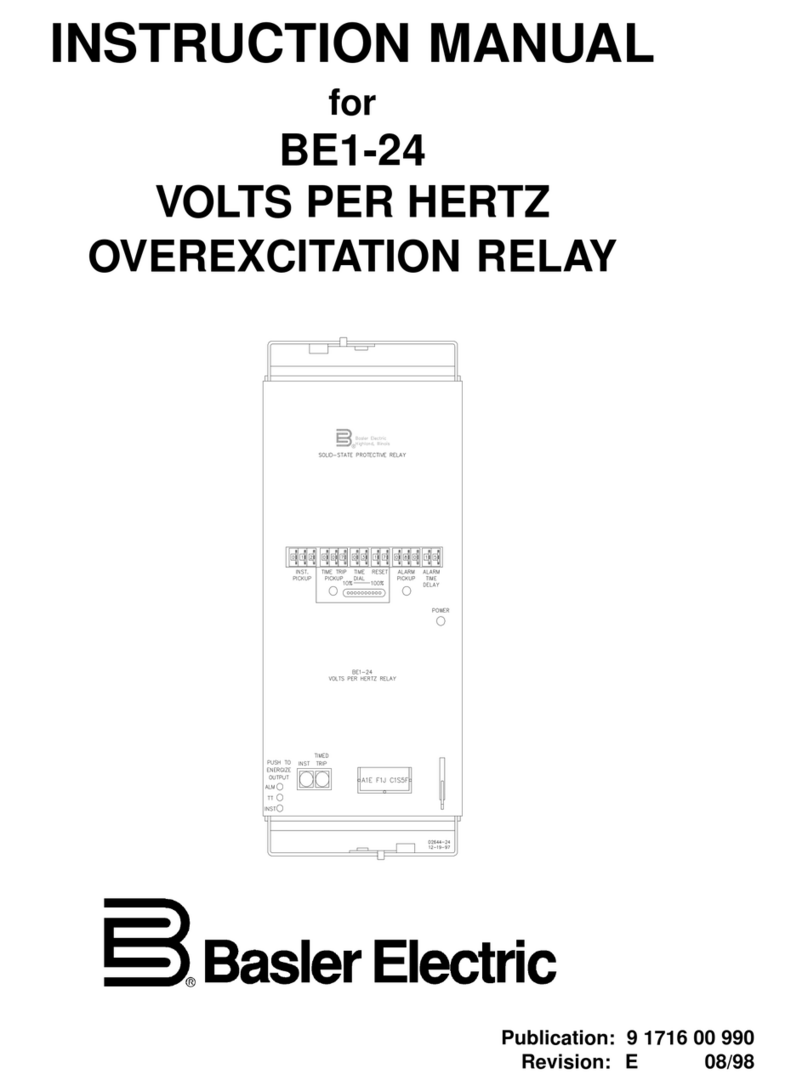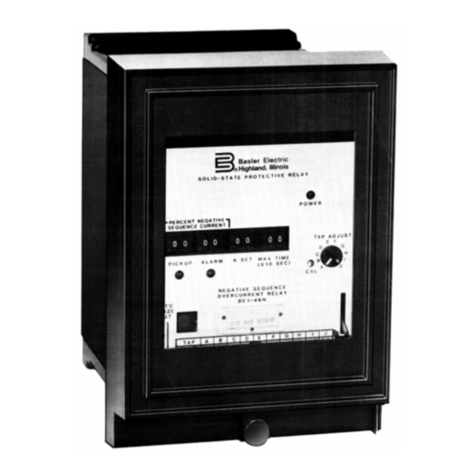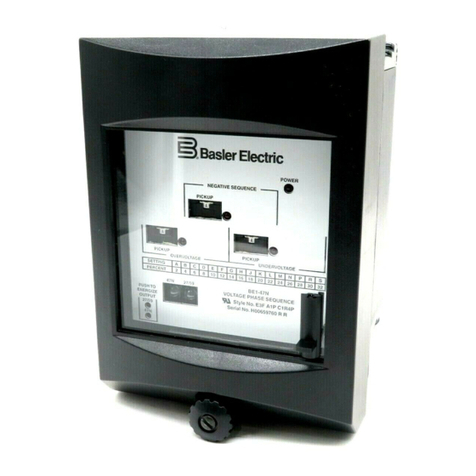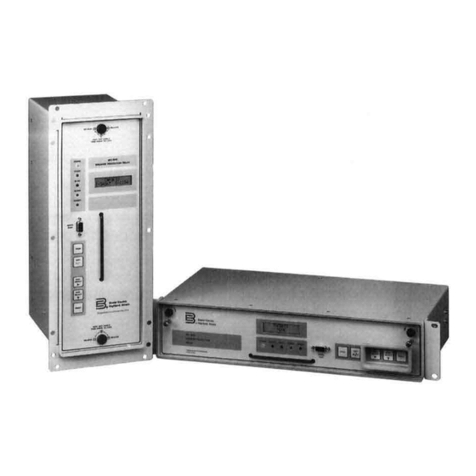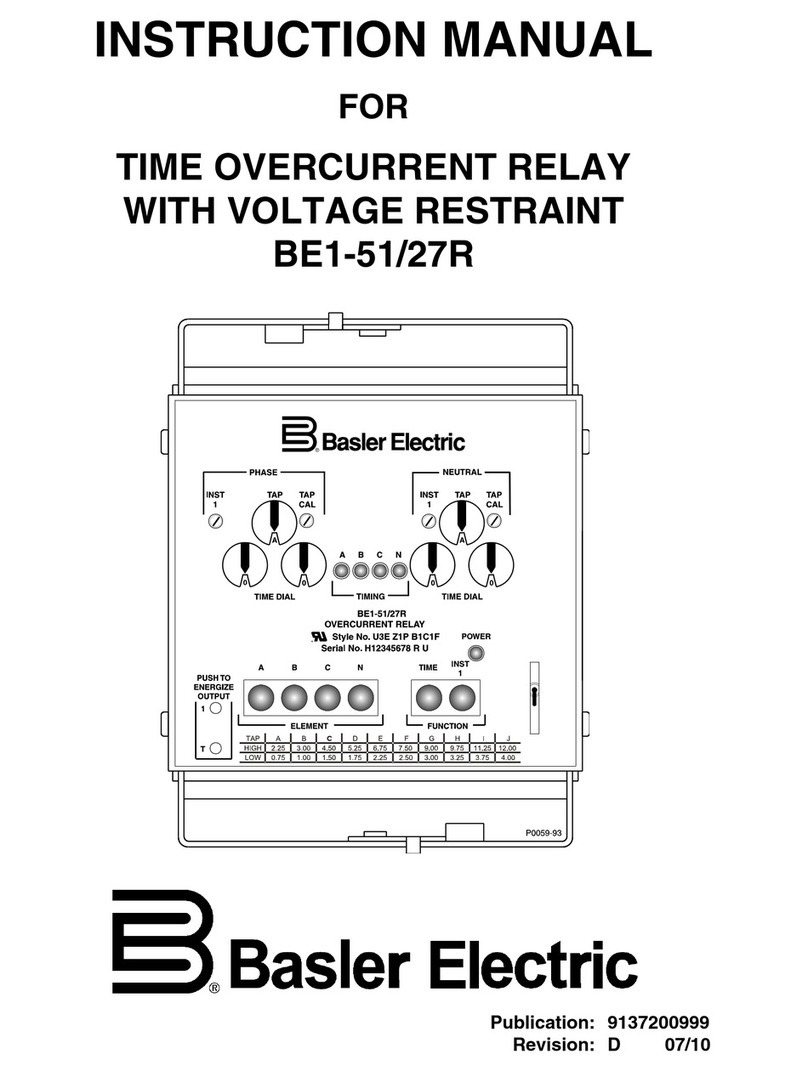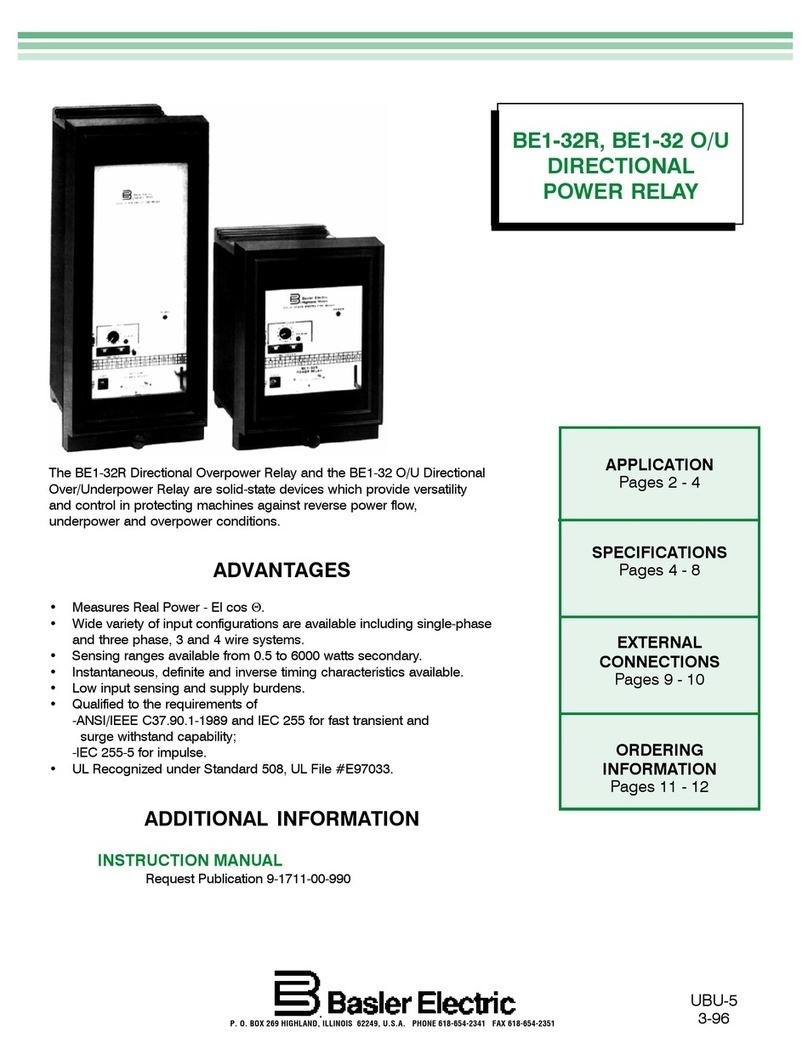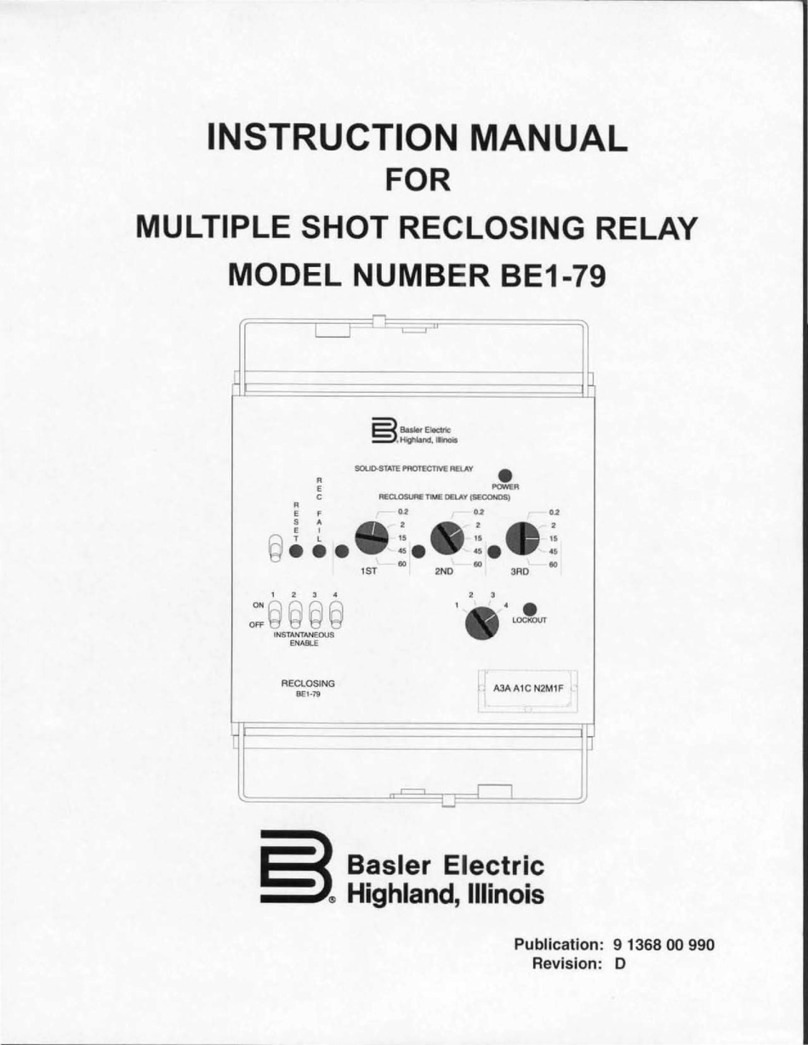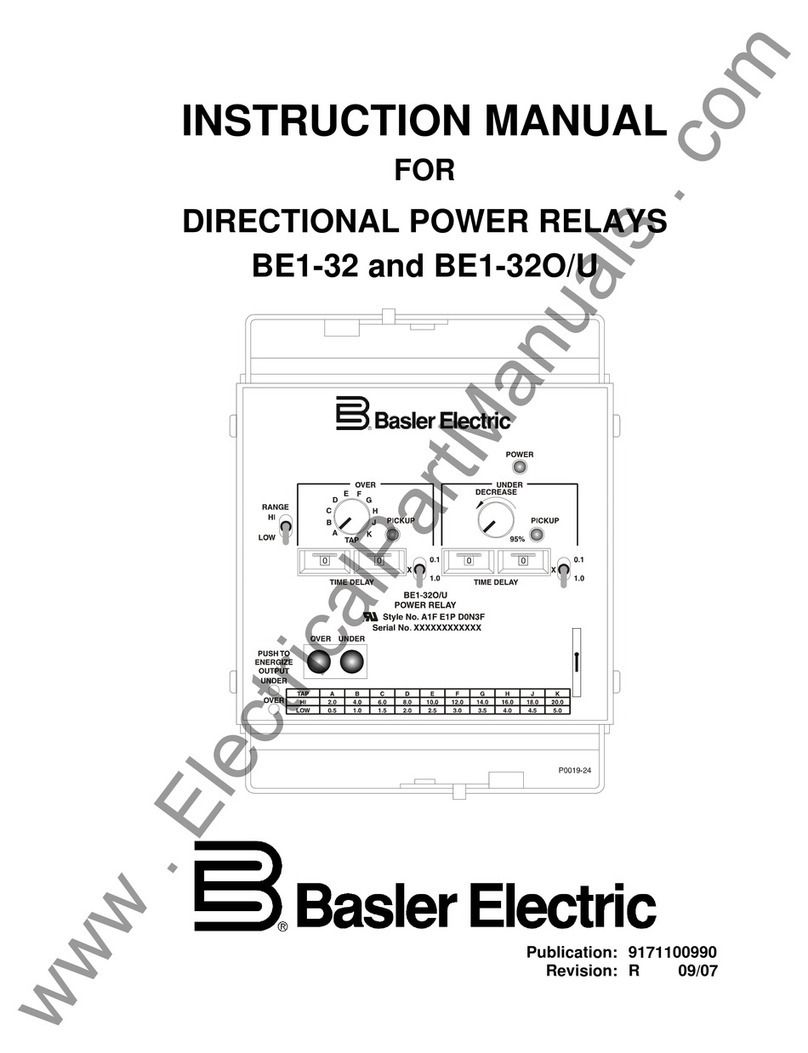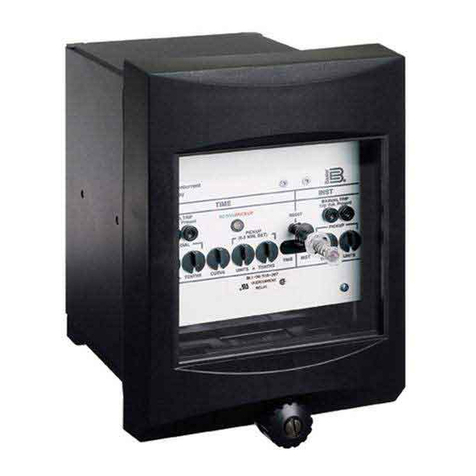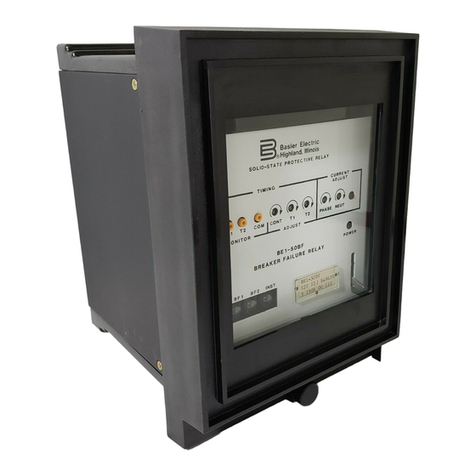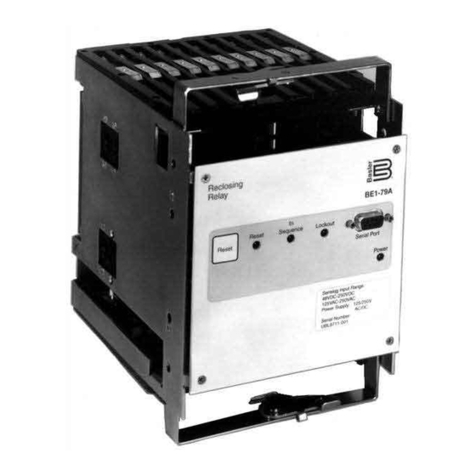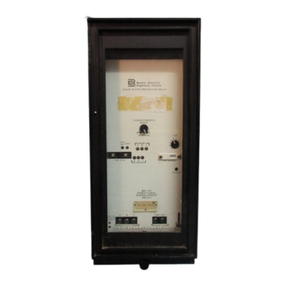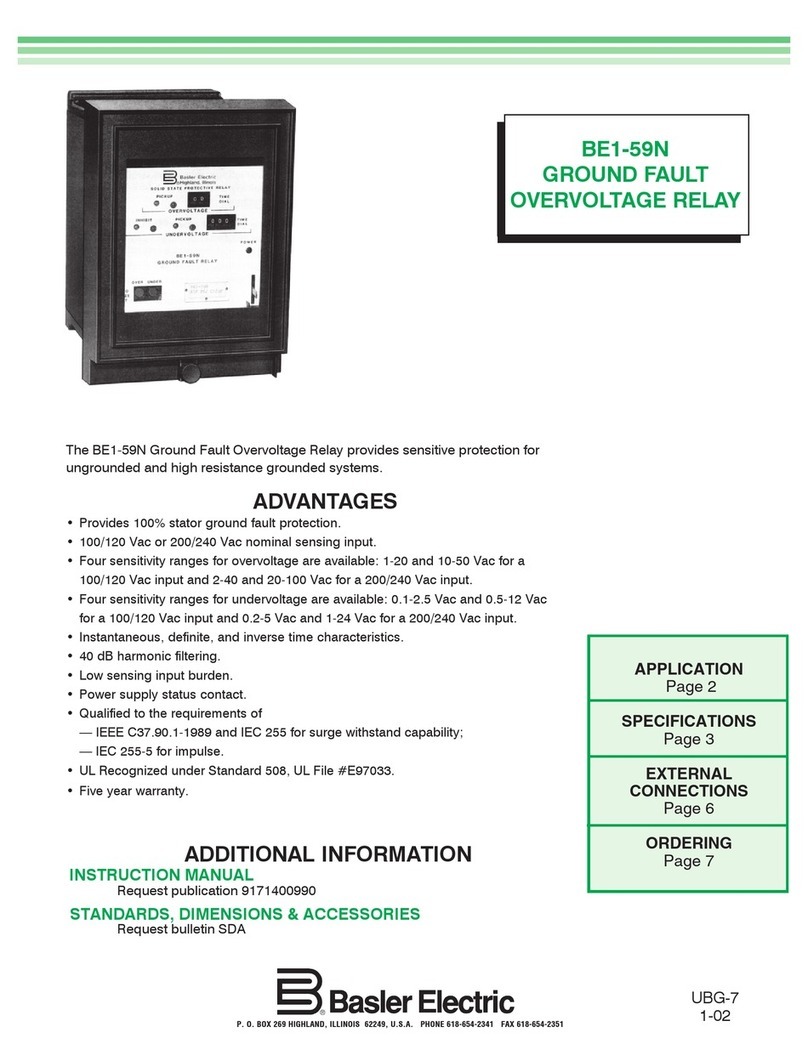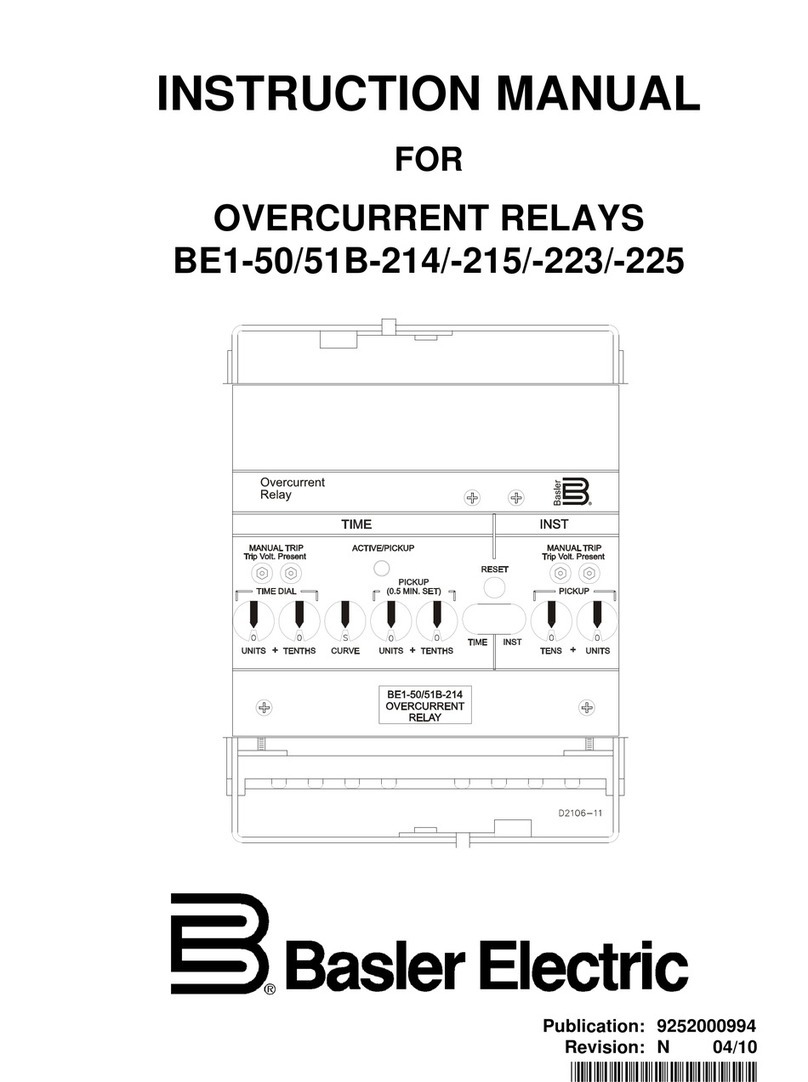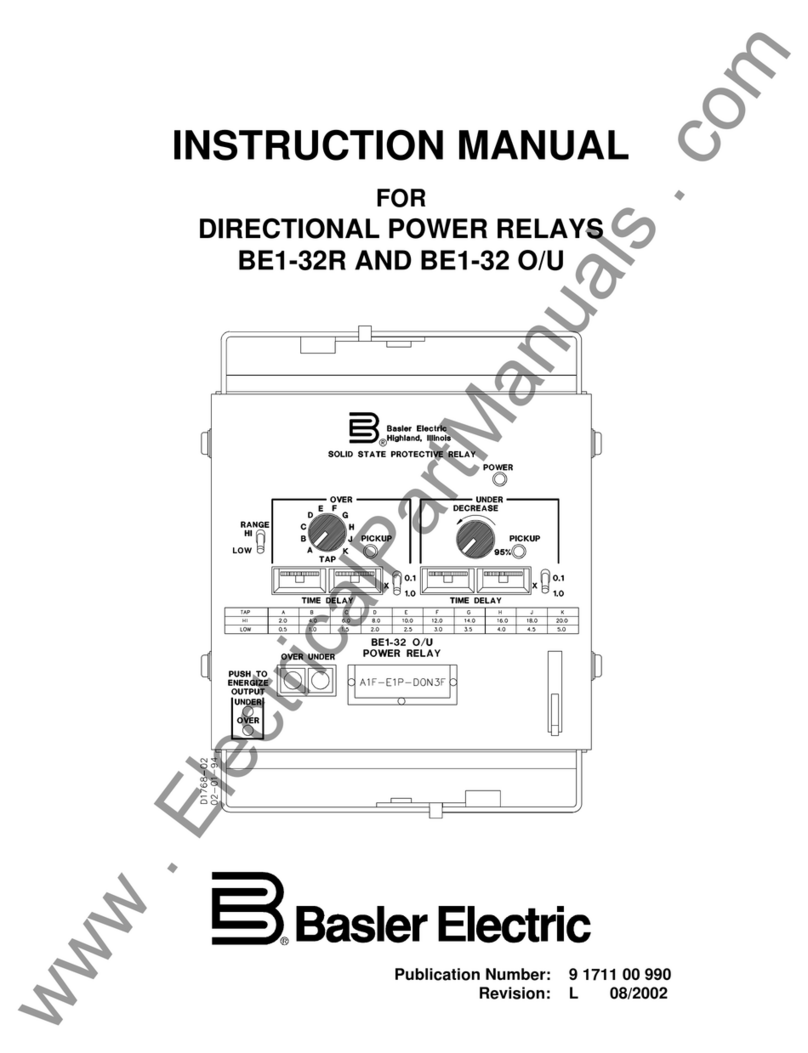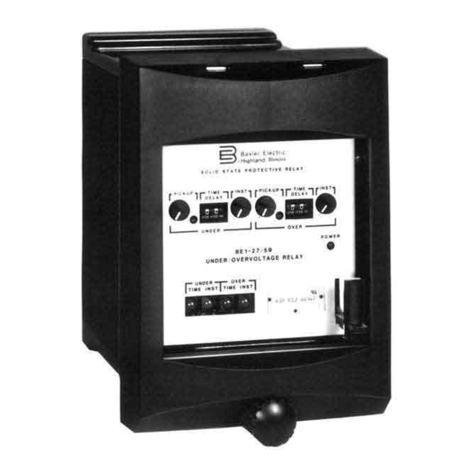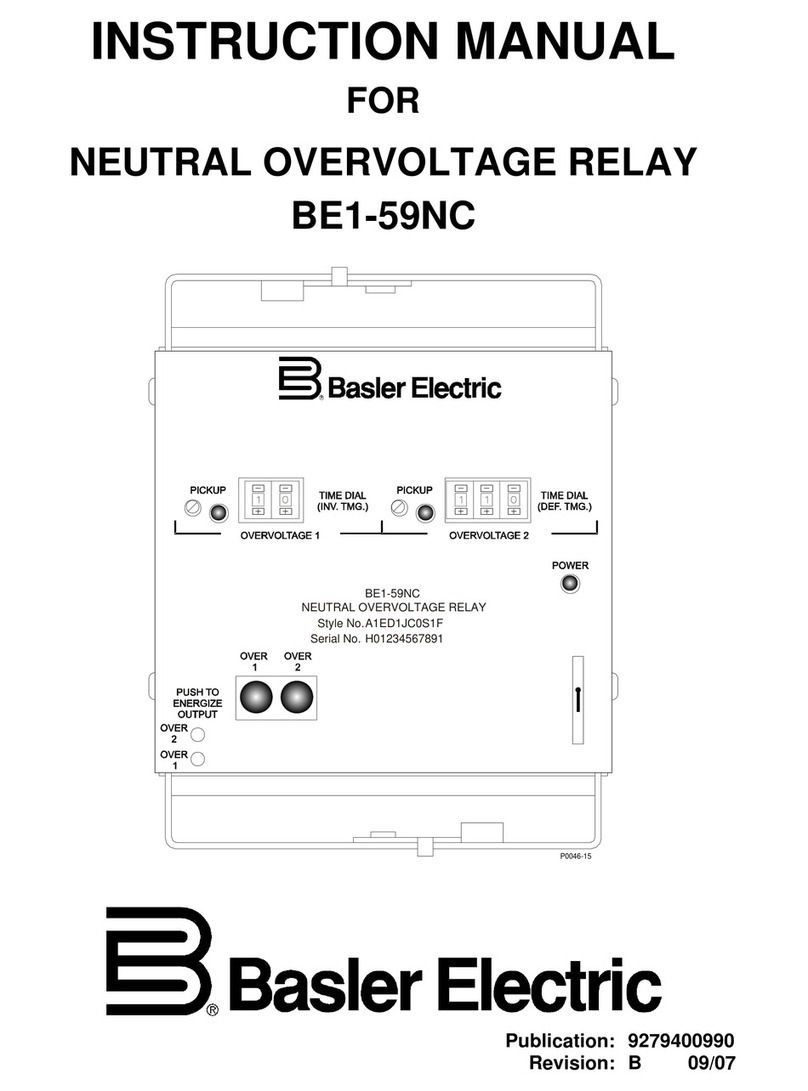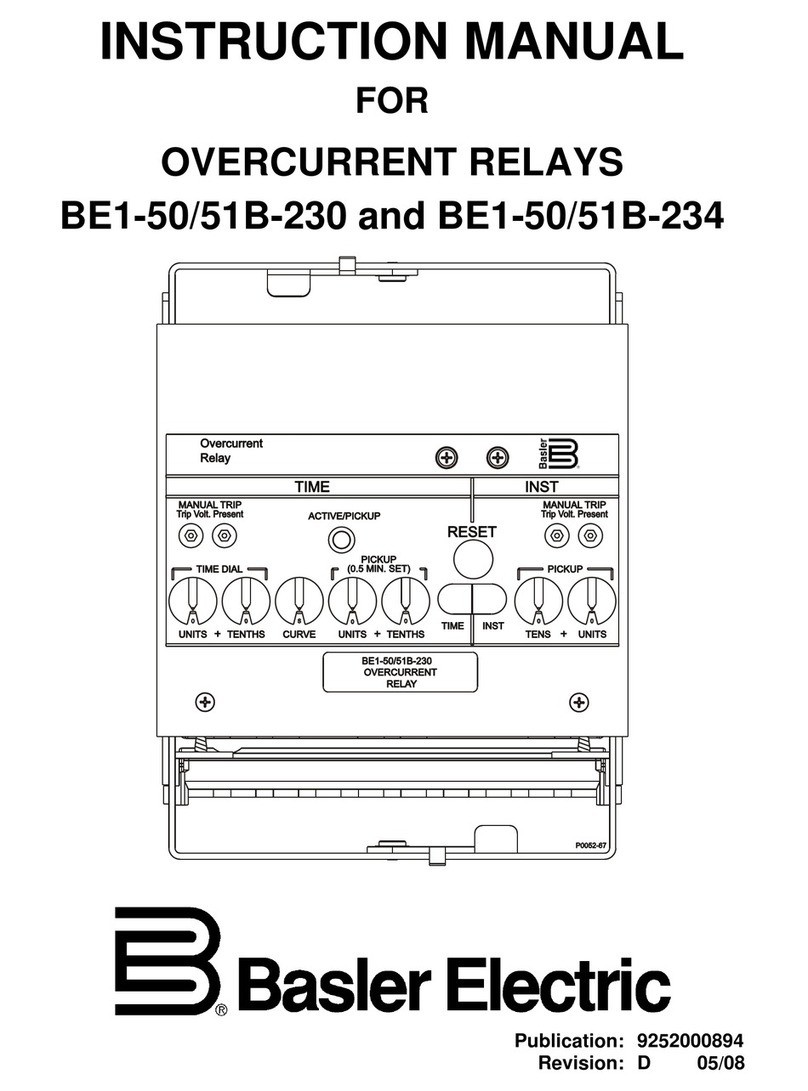
iii
CONTENTS
SECTION 1 GENERAL INFORMATION 1-1
Purpose ...................................................... 1-1
Description .................................................... 1-1
Definite Time Option ......................................... 1-1
Inverse Time Option .......................................... 1-1
Relay Assembly ............................................. 1-1
Model and Style Number Description ................................ 1-1
Sample Style Number ........................................ 1-4
Style Number Identification Chart ............................... 1-4
Specifications .................................................. 1-5
SECTION 2 CONTROLS AND INDICATORS 2-1
SECTION 3 FUNCTIONAL DESCRIPTION 3-1
Functional Description ........................................... 3-1
Sensing ................................................... 3-1
Power Supply ............................................... 3-2
Power Supply Status Contacts .................................. 3-2
Voltage Inhibit Circuit ......................................... 3-2
Input Conditioning Circuit ...................................... 3-2
Crystal Reference Oscillator ................................... 3-2
Synchronizer Circuit .......................................... 3-3
Reference Circuit ............................................ 3-3
Period Difference Circuit ...................................... 3-3
Period Difference To Frequency Difference Circuit .................. 3-3
Threshold Setting Comparator .................................. 3-3
Definite Time Delay Circuit (Timing Option E1) ..................... 3-3
Inverse Time Delay Circuit (Timing Option D1) ..................... 3-3
Relay Output ............................................... 3-3
Internally Operated Target Driver ................................ 3-4
Current Operated Target Driver ................................. 3-4
Target Indicator ............................................. 3-4
SECTION 4 INSTALLATION 4-1
General ....................................................... 4-1
Relay Operating Precautions ...................................... 4-1
Dielectric Test .................................................. 4-1
Relay Mounting ................................................ 4-1
S1 Case, Panel Drilling Diagram, Semi-Flush Mounting .............. 4-2
S1 Case, Outline Dimensions, Front View ......................... 4-2
S1 Case, Single-Ended, Semi-Flush Mounting, Side View ............ 4-3
S1 Case, Single-Ended, Semi-Flush Mounting, Outline Dimensions ..... 4-4
S1 Case, Single-Ended, Projection Mounting, Panel Drilling Diagram .... 4-5
S1 Case, Single-Ended, Projection Mounting, Rear View ............. 4-6
S1 Case, Single-Ended, Projection Mounting, Side View ............. 4-7
S1 Case, Double-Ended, Semi-Flush Mounting, Side View ............ 4-8
S1 Case, Double-Ended, Semi-Flush Mounting, Outline Dimensions .... 4-9

